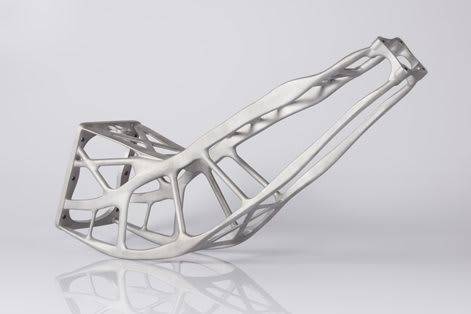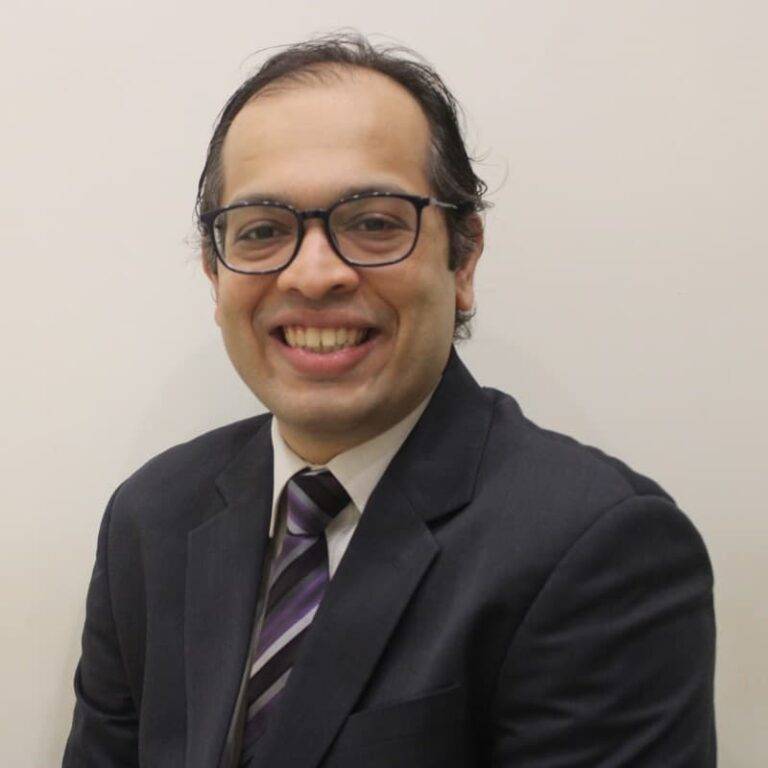Additive manufacturing (AM) is gaining ground rapidly and is now being used to produce many certified aerospace components. Initial concerns with density, porosity and grain structure have now been largely overcome. AM components now have microstructures equivalent to forged components, suitable for the most demanding structural applications subjected to high cyclic loadings. A major driver for aerospace components is weight reduction, with operators willing to pay a premium for the reduced operating costs that come from greater fuel economy. AM components have more refined grain structures than cast components, comparable with wrought components. Another significant performance benefit of AM components is the ability to precisely control internal geometry to create cooling channels and heat exchangers with features such as turbulators which increase heat transfer.
An unresolved challenge for AM is surface finish. Components subject to fatigue must be fully machined or undergo some other surface modification, such as shot peening, to enable inspection. The additional processes add cost but more significantly this prevents the full benefits of AM from being realized. In theory, AM gives complete freedom to create complex shapes, such as those generated by topology optimization. In practice, surface finish requirements often prevent this. If surface machining is required then the same limitations on form apply as for any other machined component. If shot peening is used then limitations are placed on thin and slender structures which may be vulnerable to this process.
Two AM processes are well established: Powder bed fusion (PBF) in which a laser or electron beam is focused to melt and fuse regions of powdered material contained in a powder bed; and wire fed directed energy deposition (DED) in which a plasma arc melts a wire feedstock as it is fed into the melt pool using technology closely related to welding. Both processes produce fully dense parts with high quality microstructures similar to forged components.
PBF is able to produce fine features with relatively well controlled surfaces for smaller parts. It achieves the best surface quality of any AM metal system, with the surface finish depending on powder particle size, typically ranging from 5 to 60 µm. A range of metal alloys suitable for aerospace components are available as well as high quality polymers. Build volume is currently limited to 400 mm × 400 mm × 800 mm by the need to maintain a consistent gas flow over the build area to ensure sufficient quality as well as the requirement for the bed to be completely filled with heavy and expensive metal powder. Deposition rates are approximately 5–20 cm3/h for a single laser. Multi laser systems are currently able to achieve approximately 150cm3 in the fastest materials such as aluminum and around 30cm3to 50cm3 in Nickel alloys Lasers are mechanically steered using mirrors meaning that multiple lasers are required to maintain multiple melt pools. Final surface finish is normally obtained by shot peening with machining only required for critical interfaces. The main disadvantages of PBF are the slow deposition rate and limited size.
Wire fed DED enables far higher deposition rates and virtually unlimited component size, but minimum feature size is several mm and the as-deposited surface finish is very rough. The large melt pool results in weld-bead shaped deposits which are normally machined to achieve the required dimensional accuracy and surface finish. Machining adds significant cost and means that achievable forms are limited to those which can be machined.
Defect Detection for Additive Manufactured Components
A critical aspect of quality control for AM components is the detection of internal defects. Flaws and defects in AM metal parts include lack of fusion, cold lap, porosity, voids and cracking. Cold lap is a lack of fusion caused by an oxide layer or thin film. Porosity is common in fused material and may be caused by gases entrapped within the melt pool, keyhole collapse or fusion defects. Different causes can result in different shapes with different crack propagation behavior.
During AM, only the last layer fused can be observed. However, when further layers are deposited over the top, the current layer may re-melt causing deeper penetration and the closure of apparent defects. Although destructive testing provides a definitive evaluation of internal defects, this is only suitable for process setup or sampling in high-volume manufacturing. Non-destructive tests (NDT) include dye penetrant inspection, leak testing, radiographic testing (RT), computed tomography (CT), and proof testing. RT uses x-rays or gamma-rays to view the internal structure of parts. It is widely used to inspect welds in pipelines, pressure vessels and other critical applications. It can sometimes detect lack of fusion defects. CT uses a number of sectional images, obtained by X-ray or magnetic resonance imaging (MRI), to view the three-dimensional internal structure. Lack of fusions is especially challenging for CT due to their small volume.
Surface roughness of as deposited AM parts is an issue for many NDT techniques, including dye penetrant inspection and CT. This means that surfaces often need to be machined before NDT can reliably be performed.
Surface Finish in Additive Manufacturing
PBF components have as-deposited surfaces made up of partially fused powder. The deposition layers may also be visible, despite the fact that surface roughness measurements are no higher when profiles are taken across the layers than when taken along a single layer. The surface texture depends on powder particle size, melt parameters, layer thickness and the orientation of surfaces relative to the build plate. Surface roughness makes inspection difficult and may also reduce performance by providing crack initiation sites. This reduces fatigue resistance and fracture toughness. Although surface finish is continuing to improve, surface machining or shot peening are often needed to improve surface finish. However, internal surfaces and some small features may be difficult to finish in this way.
DED processes have as-deposited surfaces made up of visible weld beads resulting in surface waviness of several millimeters. This is due to large melt pools, which are difficult to manipulate and control, caused by arc or plasma beams which cannot be focused to less than a few millimeters. High deposition rates mean that stress relief heat treatment is normally required and significant distortion may occur. Machining is, therefore, required both to maintain dimensional accuracy and to improve surface finish.
Developing new methods of obtaining acceptable surface finish, and inspecting parts, will help to extend the benefits of additive manufacturing. Improved understanding of process parameters may reduce distortion and the need to machine surfaces. If NDT techniques can be enhanced to allow reliable inspection on as-built surfaces that will immensely help the certification process and reduce the costs of manufacturing. The next step may be development of efficient and reliable in-situ inspection techniques. Since AM is a layer-by-layer process, it allows in-situ inspection opportunity in between the layers. This can be very significant particularly in the initial development and certifications stages. There is also a need to develop new and improved methods of attaining improved surface finish, which allows internal and delicate features to obtain good surface finish. For example, abrasive flow machining is being developed by Extrude Hone and electro-chemical milling is being developed by Dlyte. The aim is to reach the required surface finish, on all required surfaces, as demanded by the application. Without this, topology optimized components cannot be inspected for crack initiation defects.
Source: Engineering.com



